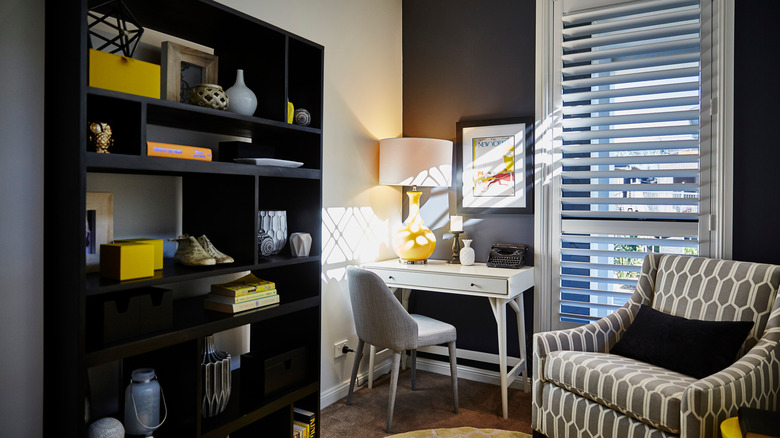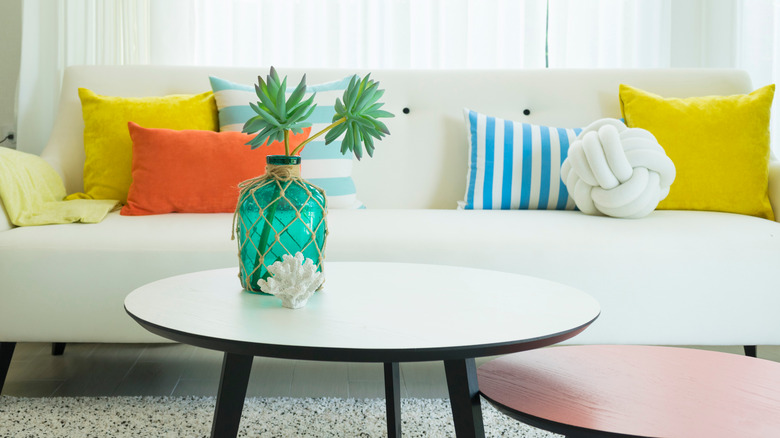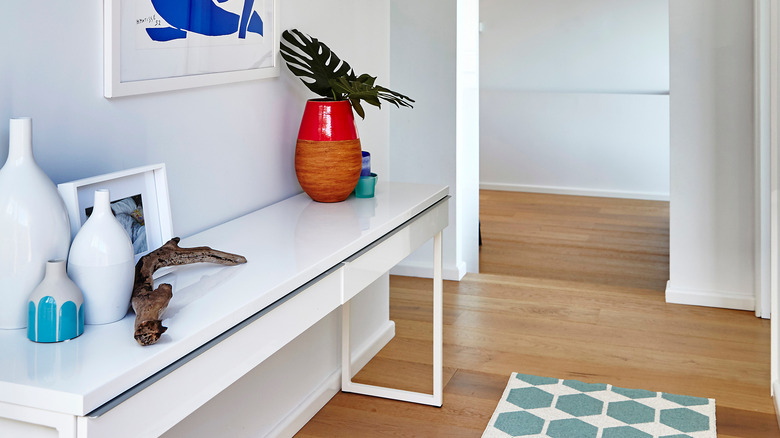HGTV's David Bromstad's Design Tips To Avoid A Themed Beach House
A well-done, beach-inspired motif can make any seaside space feel like a cozy and sophisticated oasis. However, a coastal aesthetic is also one of the most difficult designs to pull off — and, if you aren't careful, your beach house can be left feeling anything but sophisticated.
Without reimagining the coastal-inspired concept, your house runs the risk of becoming too beach-themed, which can end up feeling tacky, overdone, and kitschy. Falling victim to this type of artwork, décor, and color leaves you with a major missed opportunity to elevate your space and pull off coastal cool in an elevated way.
HGTV star David Bromstad, host of "Beach Flip," knows a thing or two about working with a coastal aesthetic. As the Season 1 winner of "HGTV Design Star" and host of the network's hit "My Lottery Dream Home," as well as "Color Splash," he's also well-versed in design that helps a space make the exact statement it intends to.
Now, Bromstad is offering his biggest tips for decorating your beach house to make it feel a little more French Riviera and less like a beachfront souvenir store.
Think outside the box
After breaking down the expectations of the type of must-have décor, the possibilities are truly endless when it comes to choosing an aesthetic that's right for you and your unique space.
"Choosing the appropriate home colors, material, textiles, and art can create a beach look without doing the theme," Bromstad said via HGTV. "There are many different styles, from nautical to more contemporary, for a beach home. It all works when done tastefully and doesn't go crazy on the 'themed' look."
Bromstad's biggest tip for successfully decorating your seaside space is to reimagine the colors, materials, and accent pieces that traditionally come to mind when picturing such a serene space. "I think we can begin to think outside what most of us envision as 'beach décor,'" he added. "Beach style and design [are] timeless; [they] just must be updated like our wardrobes. Having seashells everywhere, fish netting, and every sheet and blanket covered in shells or some type of sea life is old news."
Reimagine color
Throwing traditional color stories out the window might be what's best if you find your beach house feeling too themed.
Bromstad also suggests replacing any wicker furniture you have with brightly colored pieces (via HGTV). Decorating your seaside space with bright wicker furniture versus something traditional is a good way to pull off this vibe in an elevated and unexpected manner. In particular, the rattan material will help it feel like an actual beach house, while the pop of color keeps it from feeling like the concept has been seen and done a million times before.
While traditional blues and soft, cool pastels are often found in these themed abodes, playing around with hues helps you step outside the box and give your space an unexpected dose of sophistication and trendiness. According to Elle Decor, warm, sunset hues also lend themselves well to coastal décor and can help the space feel more relaxing while simultaneously introducing bold colors that aren't seen as often in the popular design style.
"Adding your beach colors with accents and accessories really makes a huge impact," Bromstad added. "You can achieve the look of the beach without painting your walls in color by adding color with throw pillows, throws, lighting, and art through bedding and bath."
Be intentional with materials
If you want to avoid falling into the trap of your color scheme making the space feel too beach "themed," use different materials at the beach as accent pieces to help convey the sophisticated, coastal vibe you're going for.
"The use of driftwood or reclaimed wood gives that sense of [the] beach," Bromstad said via HGTV. "Think about the natural materials and elements that surround the beach or water."
Material is also an important factor to consider in terms of practicality, as certain design elements, like the type of flooring you use, matter not only for aesthetic purposes, but also for durability. Bromstad recommends avoiding carpet at all costs, as it can quickly become musty and ruined with sand constantly being tracked indoors. Instead, he suggests using an area rug on top of any hardwood or laminate to add some visual interest while still protecting the surface.
Choosing flooring that's easy to clean and take care of, like vinyl, ceramic, or hardwood, works best for a beach house. Eastman's Carpet and Flooring recommends using bamboo if you want to go the hardwood route, as the material tends to be more durable than regular hardwood. It's also better than its counterpart at holding up against the extra moisture in the air that comes with having a home near the water.



